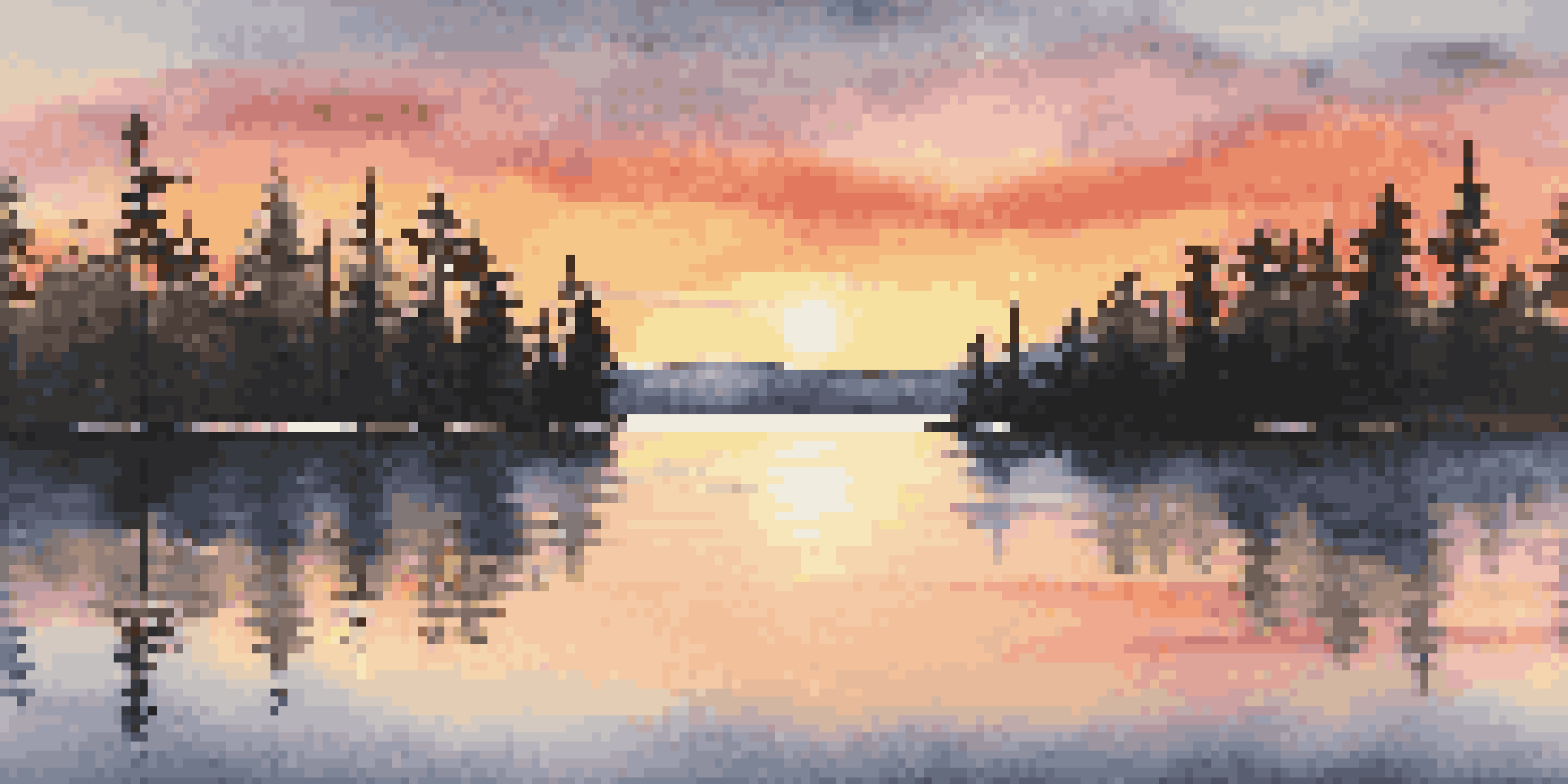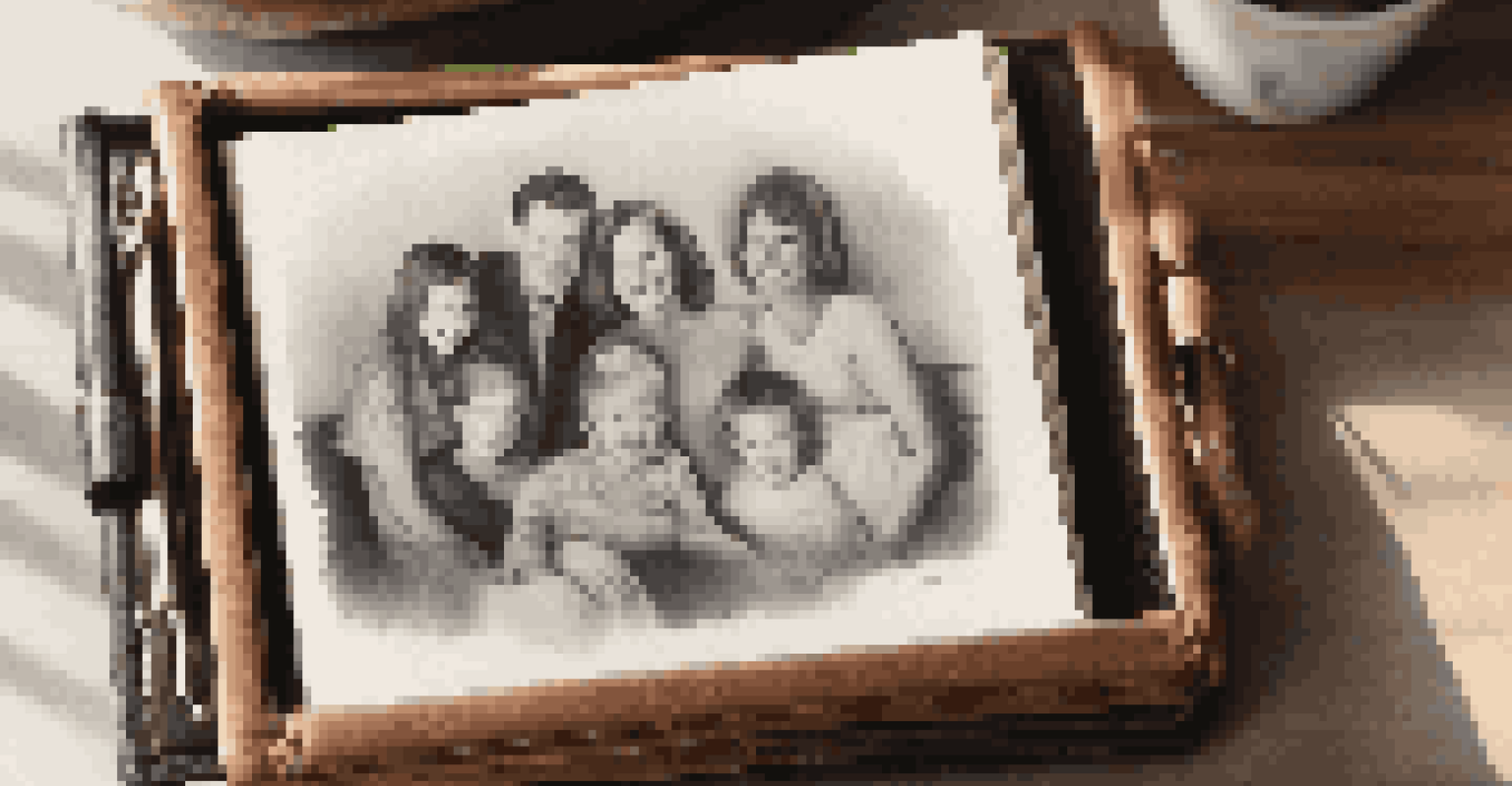Art and Memory: The Emotional Triggers Behind Visual Reminders

The Connection Between Art and Memory: An Overview
Art has a unique ability to evoke memories, often transporting us back to specific moments in time. This connection arises because visual stimuli engage our senses and trigger emotional responses that are deeply rooted in our experiences. Think of a specific painting or photograph that reminds you of a loved one; it’s not just the image itself, but the memories and feelings it conjures that create a lasting impact.
Art is the most beautiful of all lies; it is a bridge between the heart and the mind, and it can evoke memories that words cannot.
Understanding this bond between art and memory helps us appreciate how visual reminders can shape our identity and influence our emotions. For instance, many people associate certain songs or pieces of art with significant life events, forming a tapestry of personal history. This interplay between the visual and the emotional is a fascinating area of study that reveals much about human psychology.
As we delve deeper into this topic, we’ll explore how different forms of art—be it paintings, photographs, or sculptures—serve as powerful triggers for memories. By examining the mechanisms behind these emotional responses, we can better understand not only the significance of art in our lives but also its role in shaping our collective memory.
How Visual Reminders Evoke Emotions
Visual reminders, such as photographs or paintings, often evoke strong emotional reactions because they serve as anchors to our past experiences. When we see an image that resonates with us, it can trigger a rush of nostalgia, joy, sadness, or even longing. This emotional response is tied to the neural pathways in our brain, which associate visual stimuli with specific memories and feelings.

For example, a simple photograph of a family gathering can evoke a sense of warmth and belonging, reminding us of cherished moments spent with loved ones. This is because our brains are wired to connect visual cues with emotional significance, creating a rich tapestry of experiences that shape our identities. The power of these reminders underscores the importance of preserving memories through visual art.
Art Evokes Powerful Memories
Visual art serves as a powerful trigger for memories, connecting us to our past experiences and emotions.
Moreover, the emotional triggers linked to visual reminders can vary from person to person, making the experience deeply personal. What might evoke happiness in one individual could bring sadness to another, illustrating the subjective nature of memory and emotion. This diversity enhances the richness of human experience, allowing art to be a powerful medium for expression and connection.
The Role of Color in Memory and Emotion
Color plays a significant role in how we perceive art and the emotions it elicits. Different colors can evoke different feelings—warm colors like red and yellow often create a sense of warmth and comfort, while cool colors like blue and green can evoke calmness or sadness. This psychological effect of color is not just an artistic technique; it’s a fundamental aspect of how we relate to visual reminders.
A work of art is a world in itself, reflecting senses and emotions, where memories can be cherished and shared.
For instance, a vibrant sunset painting can inspire feelings of joy and hope due to its warm hues, while a monochromatic piece might evoke introspection or melancholy. These associations are deeply ingrained in our psychology, often influenced by personal experiences and cultural contexts. Understanding these color-emotion connections can enhance our appreciation of art and its ability to trigger memories.
As we explore the relationship between color and emotion further, it becomes clear that artists often use color intentionally to communicate feelings and narratives within their work. By analyzing the color choices in a piece of art, we can gain insights into the emotions the artist aims to convey and how those feelings resonate with our own memories.
The Impact of Art on Personal Identity
Art is not only a reflection of our memories but also a significant contributor to our personal identity. The artworks we choose to surround ourselves with often represent our values, beliefs, and experiences, serving as visual reminders of who we are. This connection between art and identity can be seen in various contexts, from the decor of our homes to the art we display in public spaces.
For example, a person might collect pieces that reflect their heritage or cultural background, using art as a means to honor their roots. Similarly, individuals may gravitate towards art that resonates with their personal experiences, whether it’s a piece that captures a pivotal life moment or an artwork that embodies their aspirations. This emotional bond with art enriches our understanding of ourselves and our place in the world.
Color Influences Emotional Responses
The use of color in art significantly impacts how we perceive emotions, affecting our personal interpretations and memories.
Moreover, as we navigate through life, our relationship with art can evolve, reflecting changes in our identity. New experiences or shifts in perspective may lead us to reinterpret the meanings behind the art we cherish. This dynamic interplay between art and personal identity highlights the profound impact that visual reminders have on our emotional landscape.
Art Therapy: Healing Through Visual Expression
Art therapy harnesses the power of visual expression to promote emotional healing and self-discovery. By engaging with art, individuals can explore complex emotions and memories in a safe and therapeutic environment. This creative process allows for the externalization of feelings that may be difficult to articulate verbally, providing a unique avenue for understanding and processing experiences.
For instance, someone dealing with grief may find solace in creating a piece of art that reflects their loss, using colors and imagery to communicate feelings that words cannot capture. This form of expression can facilitate healing by allowing individuals to confront and process their emotions, ultimately leading to a greater sense of closure and understanding.
Art therapy also emphasizes the importance of the creative process, rather than the final product. Participants are encouraged to focus on their feelings and experiences as they create, fostering a deeper connection to their memories and emotions. This therapeutic approach highlights the transformative power of art as a tool for emotional exploration and recovery.
Cultural Context: Art as a Collective Memory
Art serves as a collective memory that transcends individual experiences, shaping cultural narratives and identities. Through visual reminders, societies can preserve and communicate their histories, values, and traditions. This shared experience fosters a sense of belonging and community, as individuals connect over common memories and cultural symbols depicted in art.
For example, historical paintings or monuments can evoke a sense of pride and remembrance, reminding communities of their shared struggles and triumphs. These artworks not only serve as visual reminders of the past but also act as touchstones for future generations, ensuring that important cultural narratives are preserved and passed down.
Art Shapes Personal Identity
The artworks we choose to display reflect our values and experiences, contributing to our understanding of personal identity.
Moreover, the role of art in shaping collective memory highlights the importance of diverse perspectives in representing various cultural experiences. By including a wide range of voices in the artistic narrative, we enrich our understanding of history and create a more inclusive representation of human experiences. This dynamic exchange of memories through art fosters empathy and connection among different communities.
The Future of Art and Memory in a Digital Age
As we move into a digital age, the relationship between art and memory continues to evolve. Digital platforms enable new forms of artistic expression, allowing artists to reach wider audiences and share their work in innovative ways. However, this shift also raises questions about the authenticity and permanence of digital art as visual reminders.
For instance, while a digital artwork can be easily shared and replicated, it may lack the tangible connection that physical art provides. This distinction is crucial when considering how we engage with memories and emotions tied to visual reminders. As technology advances, we must navigate the balance between the benefits of digital art and the emotional resonance of traditional forms.

Furthermore, the rise of virtual and augmented reality offers exciting possibilities for experiencing art and memory in immersive ways. These technologies can enhance our understanding of art by allowing us to interact with it in new dimensions, deepening our emotional connections. As we explore the future of art, it’s essential to consider how these advancements will shape our collective memory and emotional experiences.